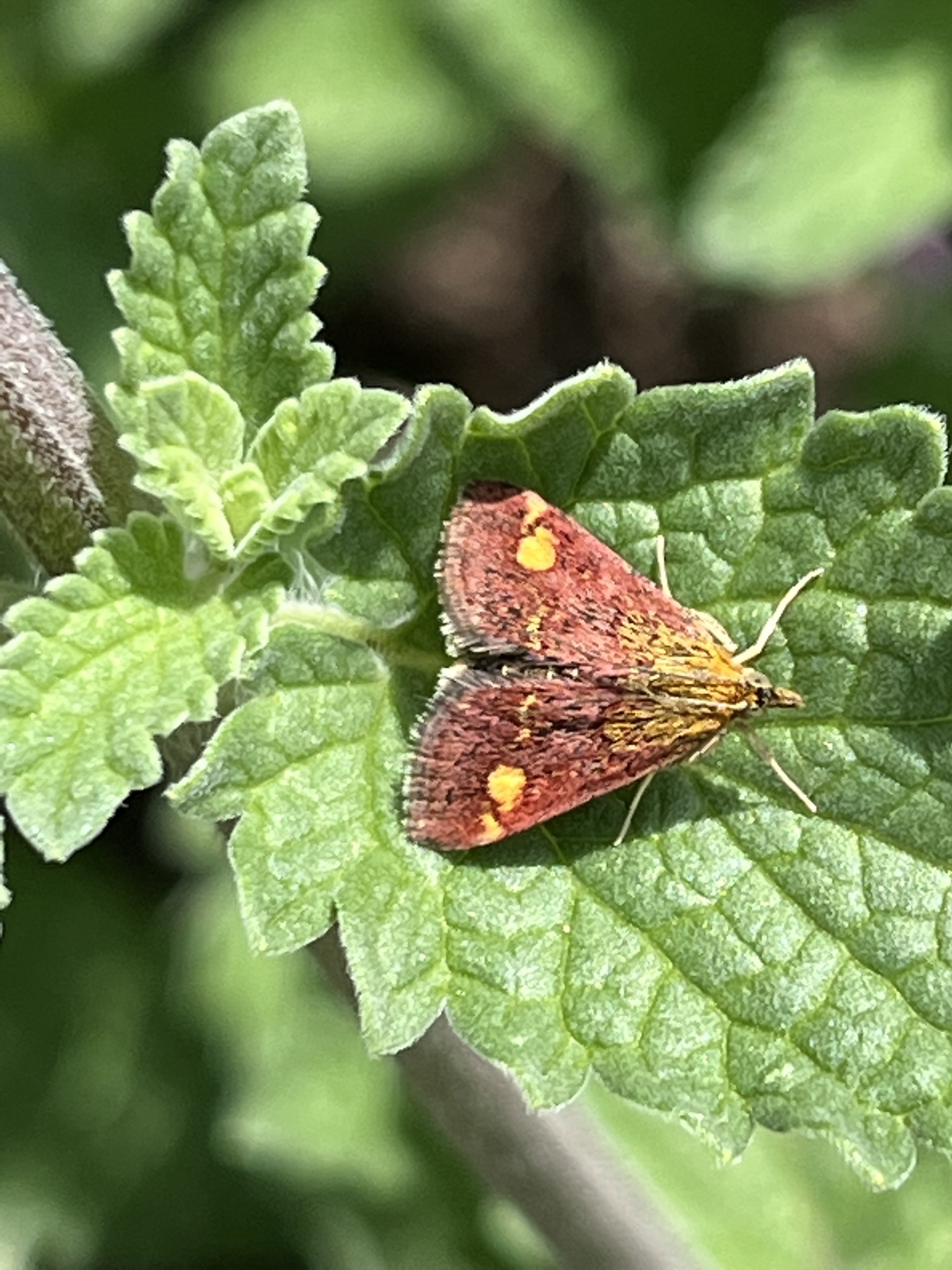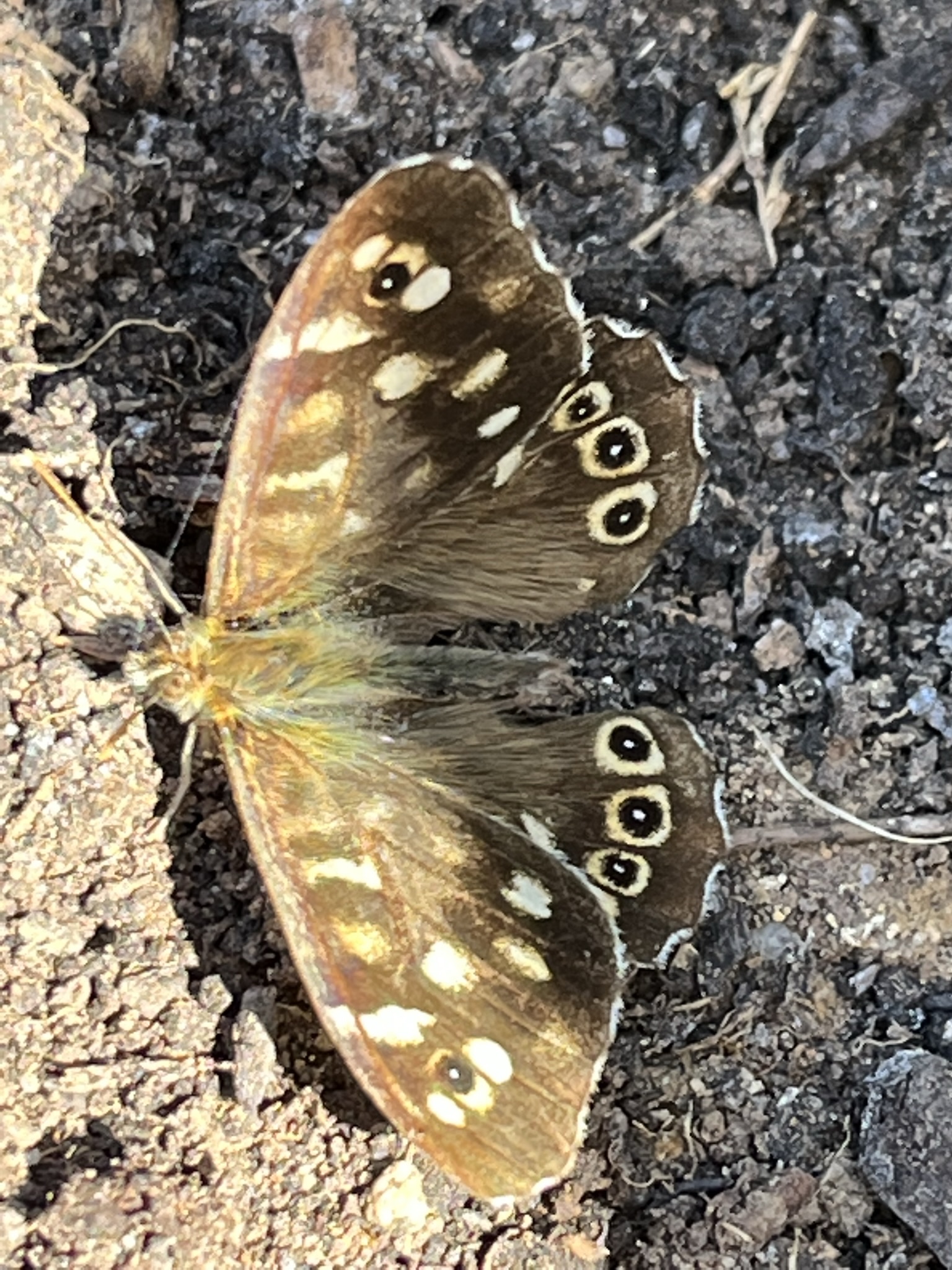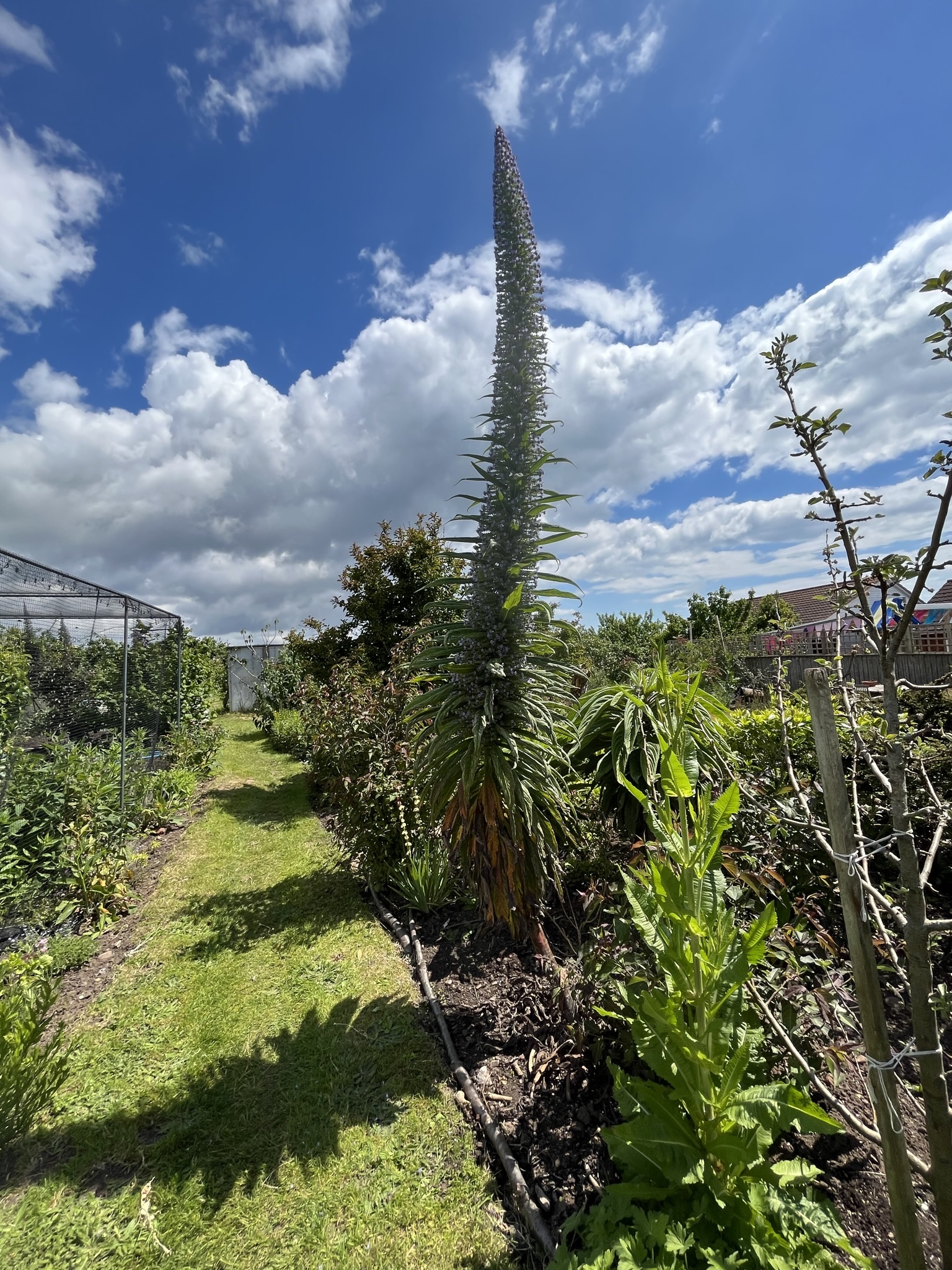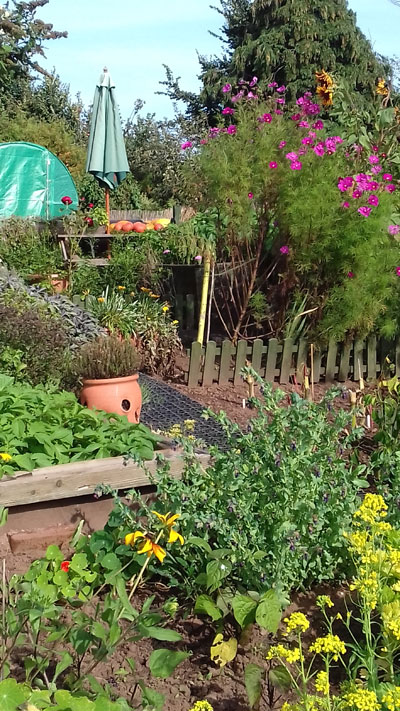 I think May is one of the months that the wildlife plot is at its best and this May was no exception. We had plenty of wildlife that I hadn't seen before on the plot, some that I managed to capture on my phone and some that I didn't. Last year I planted quite a bit more Catmint or Nepeta of varying types because pollinators love them but so do other things. Earlier in the month I caught this tiny little Mint Moth sitting on one of the Nepeta Low Walkers' leaves sunning itself. Apparently they fly at night and in the sunshine which is why he was out when I was.
I think May is one of the months that the wildlife plot is at its best and this May was no exception. We had plenty of wildlife that I hadn't seen before on the plot, some that I managed to capture on my phone and some that I didn't. Last year I planted quite a bit more Catmint or Nepeta of varying types because pollinators love them but so do other things. Earlier in the month I caught this tiny little Mint Moth sitting on one of the Nepeta Low Walkers' leaves sunning itself. Apparently they fly at night and in the sunshine which is why he was out when I was.
In May new research was released that showed flying insects had declined by up to 60% in the last 20 years which is a shocking finding. It is true. I can't remember when I last had a bug squashed on my car windscreen but remember it driving my Dad mad on long journeys because the windscreen wipers in our Allegro were not very efficient and he had to get out and wash the windscreen with water and a scraper at regular intervals.
One thing I have learnt is that in the world of wildlife there are insects that are known as generalists and those that are specialists and it is the specialists that are losing out fastest. If a specialist insect loses its habitat there is no where else for it. If a generalist loses its current habitat it will just move on the the next suitable plant nearby. So there is a theory that we should be planting for the specialists and the generalists will benefit as well. Catmint attracts generalists for the nectar but specialists such as Mint Moths as well.
 We also had some different butterflies on the plot. One was a Speckled Wood butterfly which is usually found as its name suggests in woodland. It is a common butterfly feeding on honeydew from aphids and the caterpillars feeding on grasses - one reason for doing No-Mow May where you can.
We also had some different butterflies on the plot. One was a Speckled Wood butterfly which is usually found as its name suggests in woodland. It is a common butterfly feeding on honeydew from aphids and the caterpillars feeding on grasses - one reason for doing No-Mow May where you can.
You will find more things lying around in the beds of the plot: old chairs (not for sitting on) a non-working wheelbarrow and the steel cage of an IBC. I am working on the principle on the plot that there can be no waste and take very little to the recycling centre. This means that I have to find creative ways of allowing things I no longer need to have a second purpose. The IBC framework will be used as a support for more climbers in the woodland area and the chairs will just rot down as they are wood and provide habitats for all the critters that like rotting wood. I will try and ensure that the plot does not end up looking like a dump itself!
 There are several types of Echium on the plot - all loved by bees. We have the very tall Echium pininana as in the photo which is covered in bees all day long with more plants in the waiting. I think they will flower once this one starts to go over. There is also Echium russicum which has red flowers. Brownie points if you can find it on the plot as it is a much smaller plant and there are three of them. Finally, we also have the annual Echium, Echium vulgare which flowers for months and is also a favourite of bees.
There are several types of Echium on the plot - all loved by bees. We have the very tall Echium pininana as in the photo which is covered in bees all day long with more plants in the waiting. I think they will flower once this one starts to go over. There is also Echium russicum which has red flowers. Brownie points if you can find it on the plot as it is a much smaller plant and there are three of them. Finally, we also have the annual Echium, Echium vulgare which flowers for months and is also a favourite of bees.
What I really want though is an Echium candicans 'Pride of Madeira' which is low growing but quite wide and is multi-headed. I can be found outside the train station and behind Hangtime waiting for the plants in those locations to drop seed so that I can get a few seedlings.
June is 30 Days of Wild organised by the Wildlife Trusts so there are plenty of opportunities and ideas to engage with wildlife.
